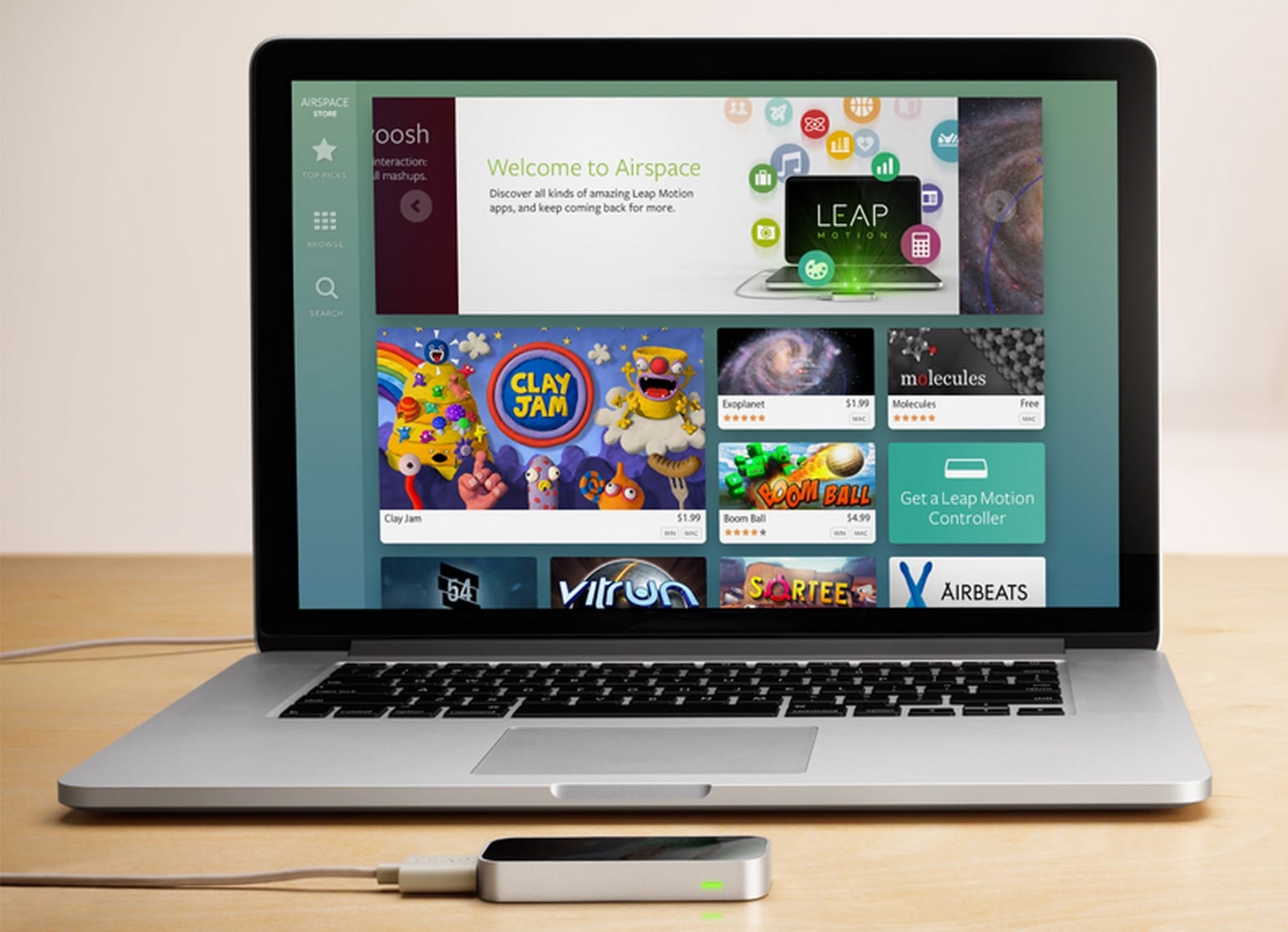Leap Motion
Over the past few years we have seen a number of companies attempt to position a new human interface device. For example, natural language voice (like Siri), motion sensing (like Kinect) and most notably multi-touch (across a number of different device types).
I think it’s fair to say that only multi-touch has been a true success, dominating the smartphone and tablet markets, but even with this momentum multi-touch has failed on the traditional desktop. As a result the trusty keyboard and mouse continues to rule supreme.
However, in May 2012 a new contender entered the market, known as the Leap Motion Controller. This simple device is similar in concept to Microsoft’s Kinect, but instead of working in the living room, it’s been specifically designed for a closed environment, such as your desk.
A few months ago I received my Leap Motion Controller and I’ve been using it on and off since then on my PC and Mac. As a result I thought it was about time I shared some of my initial thoughts.
Let’s get the big question out of the way first. Can the Leap Motion Controller replace the traditional keyboard and mouse? The short answer is no, at least not yet.
The Leap Motion controller is about the size of a stick of gum and connects to a PC or Mac via USB 2.0.
The installation is fast and painless, with a simple driver installation for your chosen platform. At which point the Leap Motion becomes available for use as an input device (for compatible software).
Leap Motion have (thankfully) realised that new hardware is only as good as the software that uses it, therefore they have launched their own application store known as the “AirSpace Store”. Here you will find hundreds of applications for Mac and PC (free and paid) that support the Leap Motion controller.
I have tested a number of the available applications, ranging from simple games to computer controls and productivity apps. My main finding is that the quality of these these applications varies massively. Some, like “Cut the Rope” work very well, adjusting perfectly to the Leap Motion Controller. Unfortunately others, like many of the Computer Control applications are less successful and require a steep learning curve. For example, I tried “BetterTouchTool” for Mac and “Touchless for Windows” and although both are functional, I found them to be more frustrating than useful. In my opinion it worked a little better in the Windows environment, simply because Windows 8.1 is more touch friendly than OS X, however neither option is something I could recommend for daily use.
To be clear, the issue is not the hardware. The Leap Motion Controller works great! It’s responsive, sensitive and accurate. The issue is that most software (like OS X) was not designed to use this type of control mechanism and as a result everything feels a little forced.
I’m sure this experience will change over time and I’m confident that as new software is released that is specifically designed for the Leap Motion Controller it will really shine. Unfortunately I don’t see OS X or Windows ever truly supporting this control mechanism. Therefore it will likely always be relegated for specialist software and not as a replacement for the traditional keyboard and mouse.

Overall the Leap Motion Controller is a great piece of hardware! It looks great and has impressive design and build quality. The drivers for PC and Mac also seem to work well, with no obvious limitations. This leaves the main challenge being software. Thankfully this is something that the developer community and time will hopefully fix. Therefore I plan to keep a close eye on the Leap Motion Controller as I eagerly await its “killer app”.